Glossary

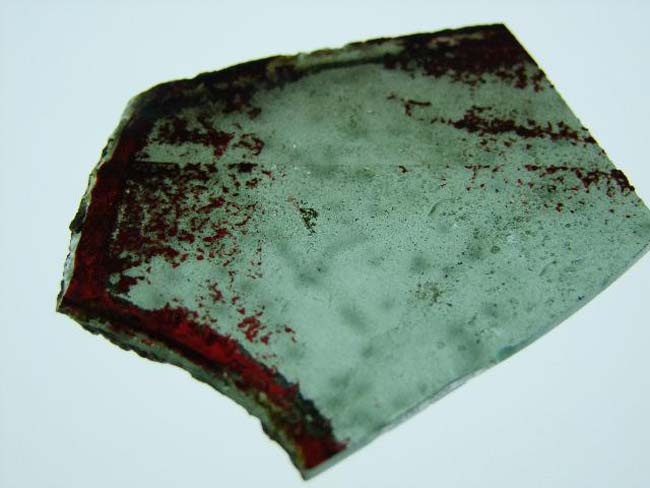
Filename: abrade.jpg.
Download image
|
ABRADE To scrape or grind away flashing to expose the base glass. | |
|
|
ARMATURE A framework of metal bars used to hold panels in place. Armatures were used until the late thirteenth century. | |
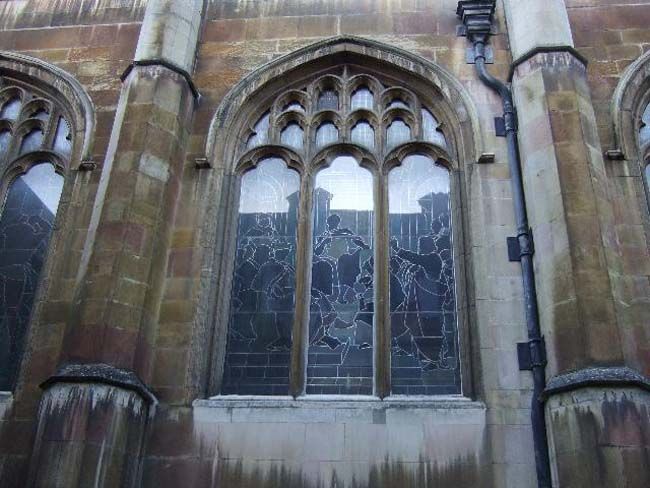

Filename: backglazing.jpg.
Download image
|
BACK GLAZING An alternative term for plating used when only the exterior face of the old glass is fitted with modern glass. | |
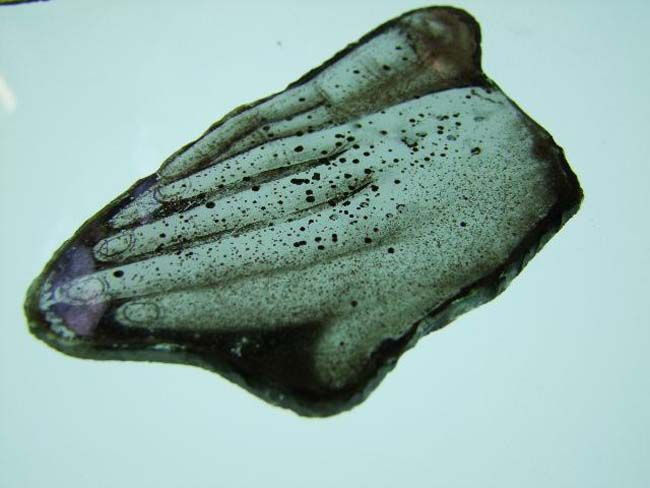

Filename: backpainting.jpg.
Download image
|
BACK-PAINTING Painting on the exterior face of the glass. | |

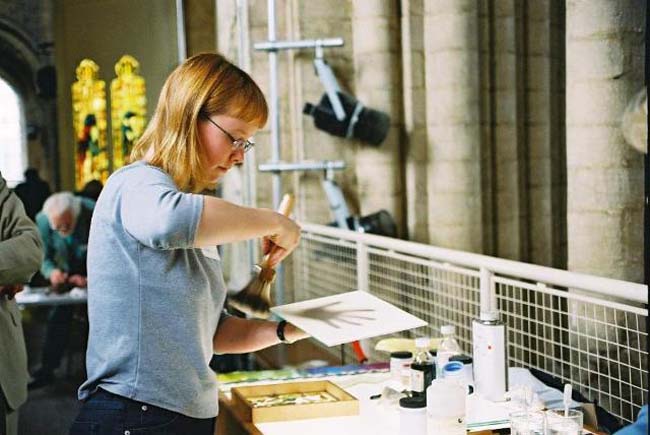
Filename: badgerbrush.jpg.
Download image
|
BADGER A broad brush (traditionally made of badger hair) used to spread glass paint evenly. | |
|
|
BOTTLE GLASS See CROWN or BOTTLE GLASS. | |
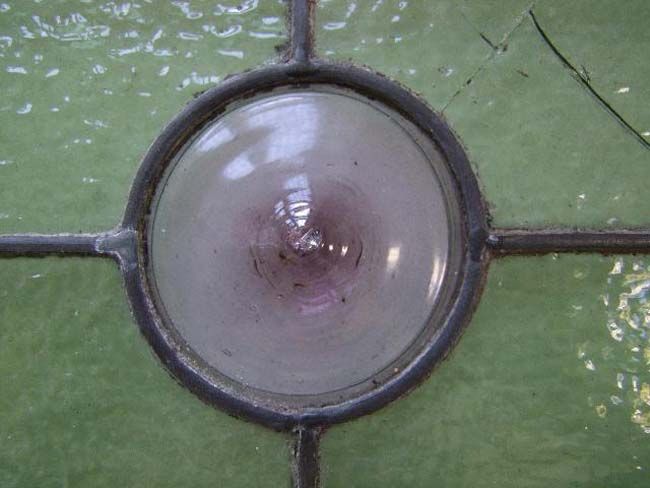

Filename: bullseye.jpg.
Download image
|
BULL’S EYE See CROWN or BOTTLE GLASS. | |
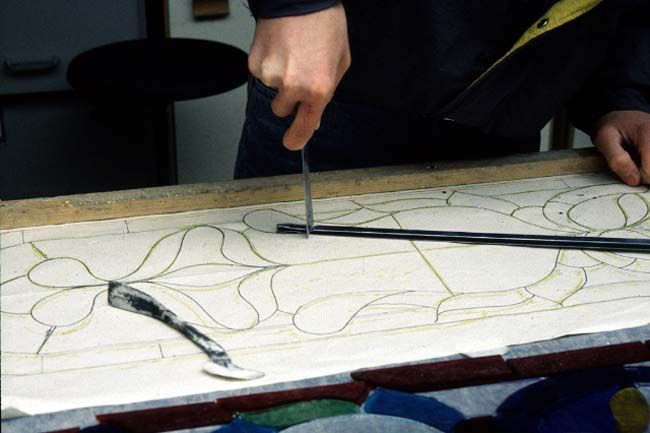

Filename: calmes.jpg.
Download image
|
CALMES or CAMES Cast strips of lead used to assembly a panel of glass (from Latin calamus, reed). Calmes are H-shaped in section and in the medieval period they were cut and shaved to the desired width and length; in later times they were milled. The central part is called the heart or core, and the part that covers the glass is called the leaf or the flange. Individual calmes were soldered to each other where strips met. | |
|
|
CARTOON A full-size design for a window or panel. | |
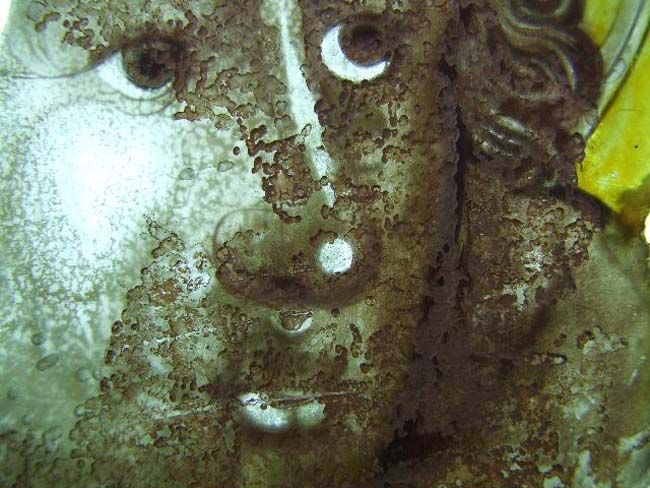

Filename: corrosion.jpg.
Download image
|
CORROSION Deterioration of the surface of the glass; this normally results in pitting or crusting and may occur on either face. | |


Filename: crosshatching.jpg.
Download image
|
CROSS-HATCHING A dense net-like pattern used as in-fill. | |
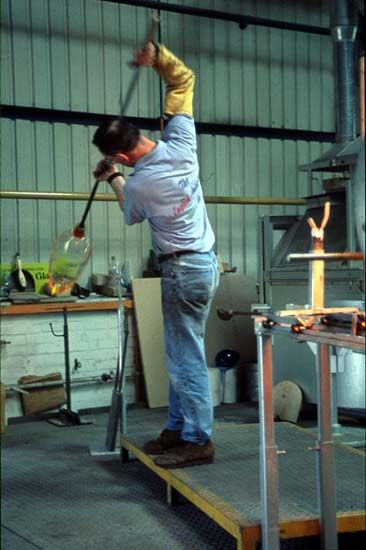

Filename: crownbottleglass.jpg.
Download image
|
CROWN or BOTTLE GLASS Made by spinning molten glass attached to a pontil iron so that it is spread by centrifugal force into a sheet which is thickest in the centre where the iron was attached. The resulting thick knob of glass is known as a BULL’S EYE. | |
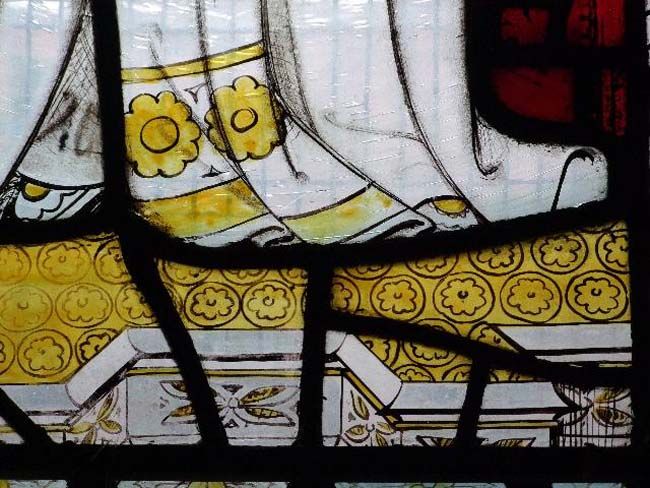

Filename: diaper.jpg.
Download image
|
DIAPER A repeated geometrical pattern used as a background or to decorate garments etc. | |

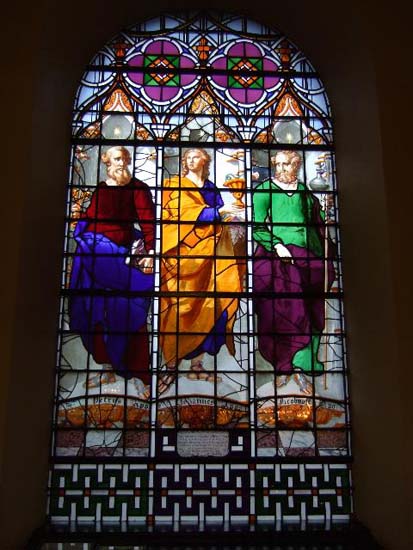
Filename: enamels.jpg.
Download image
|
ENAMELS Colours consisting of a metallic oxide colouring agent and a flux of molten glass, which can be fired on to the inner surface of white glass enabling multi-coloured painterly effects to be achieved. | |
|
|
FERRAMENTA Ironwork, set in the masonry of the window, supporting the panels of glass. This includes ARMATURE, T-BARS (LUG-BARS), SADDLE-BARS and STANCHIONS. | |

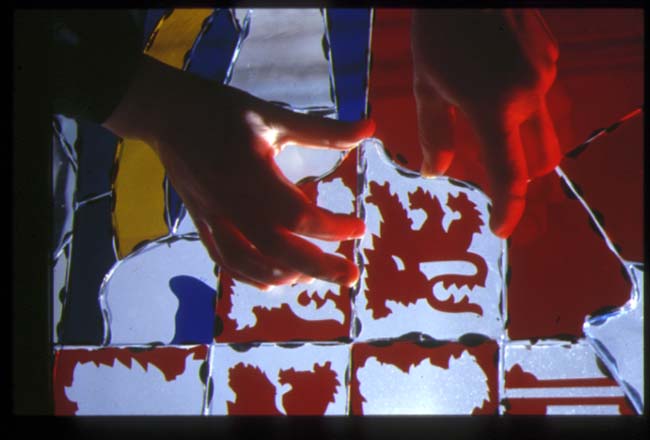
Filename: flashedruby.jpg.
Download image
|
FLASHING Application of a thin coat of coloured glass on a base glass. Flashed ruby is most commonly found. | |

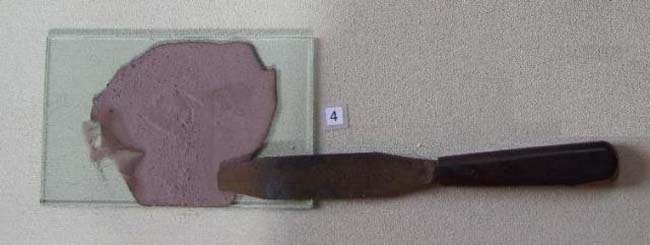
Filename: glasspaint.jpg.
Download image
|
GLASS PAINT A mixture of finely ground glass, iron or copper oxide, and a flux, applied to the glass and fired. | |
|
|
GRISAILLE Delicate geometric or leaf patterns of regular design painted on or leaded into white glass (usually with little or no pot metal). | |
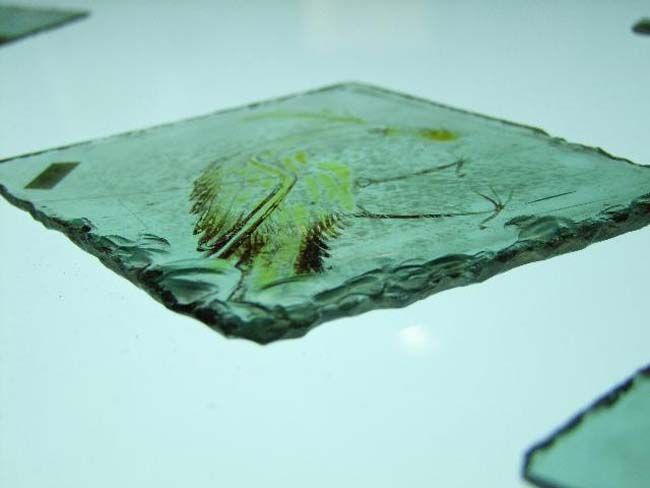

Filename: grozing.jpg.
Download image
|
GROZING The method of shaping glass by means of a metal tool with a hooked end which makes a characteristic ‘bitten’ edge. | |
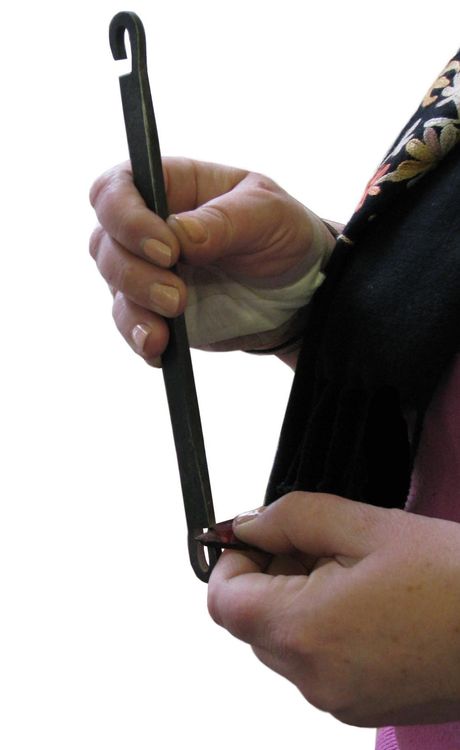

Filename: grozing01.jpg.
Download image
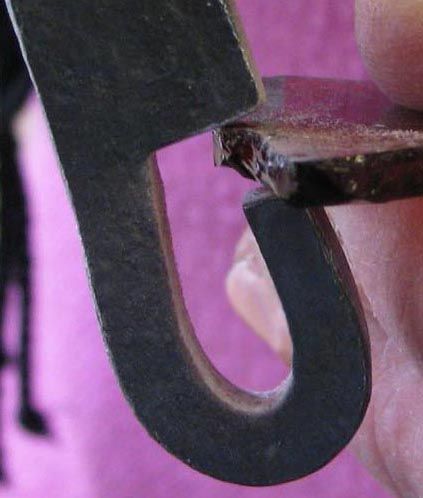

Filename: grozing02.jpg.
Download image
|
GROZING IRON The metal tool used for GROZING. | |
|
|
LUG-BAR See T-BAR. | |
|
|
MATT WASH A thick or thin wash of paint that has not been modulated by smear shading or stippleshading. | |
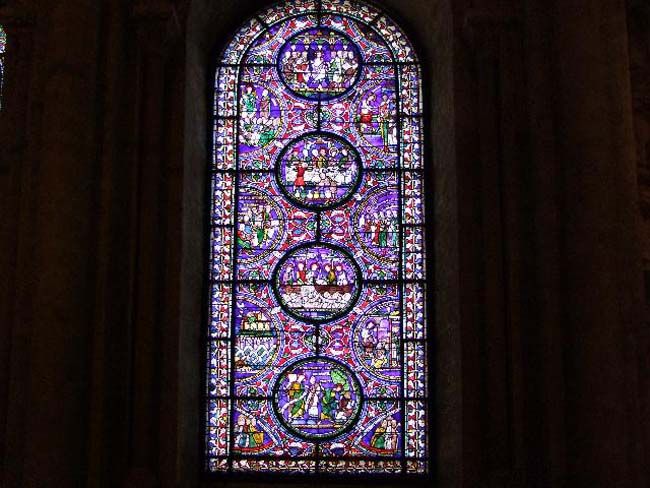

Filename: medallion.jpg.
Download image
|
MEDALLION Circular panel of several pieces of glass leaded together. | |
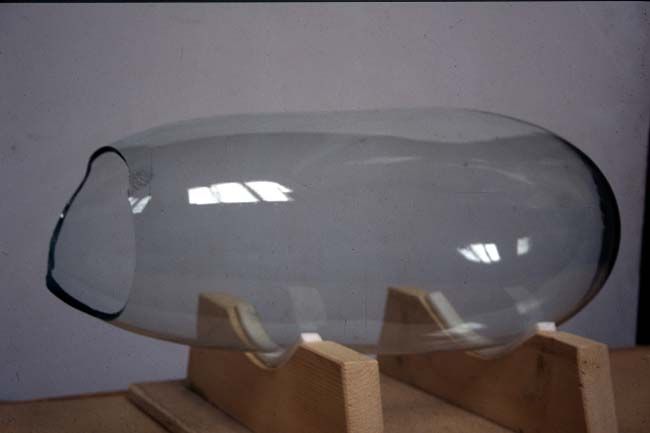

Filename: muff.jpg.
Download image
|
MUFF a cylinder of blown glass, cut along its length when hot and flattened into plate glass. | |

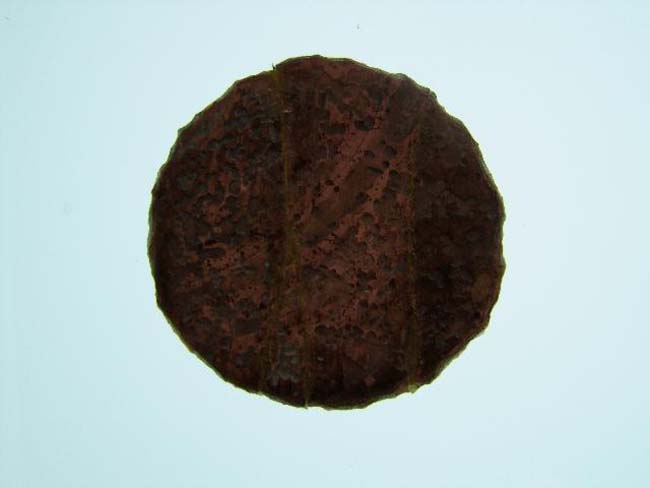
Filename: murrey.jpg.
Download image
|
MURREY a colour ranging from purple to pink and reddish brown. | |
|
|
NEEDLEWORK fine relieving done with a needle or sharp instrument, scratching out. | |

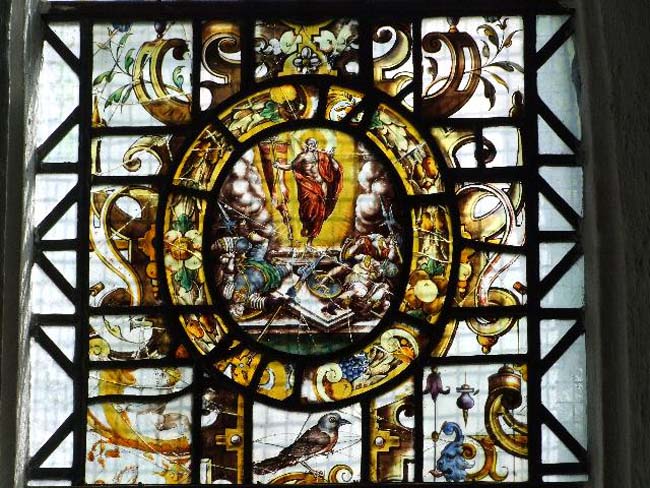
Filename: oval.jpg.
Download image
|
OVAL a unipartite panel of oval shape. Such a panel is sometimes described as a ROUNDEL. | |
|
|
PAINT See GLASS PAINT. | |
|
|
PICK OUT See STICKWORK. | |
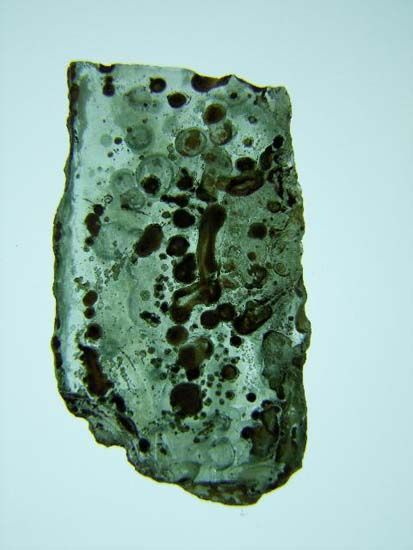

Filename: pitting.jpg.
Download image
|
PITTING Cavities in the surface of the glass caused by deterioration. See also CORROSION. | |
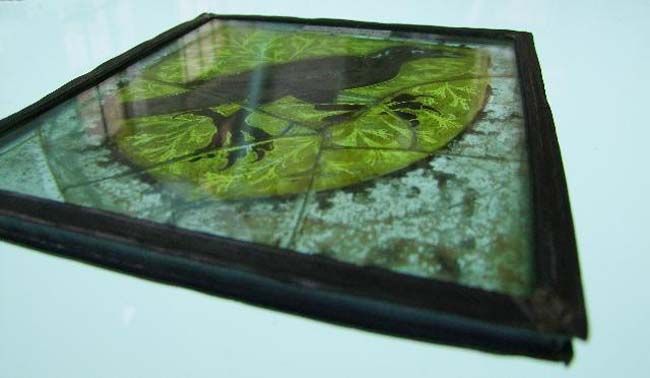

Filename: plating.jpg.
Download image
|
PLATING Protecting old glass by fitting modern glass to the exterior face, and sometimes both faces. | |
|
|
POT-METAL Glass coloured throughout when molten with one or more metallic oxides. | |

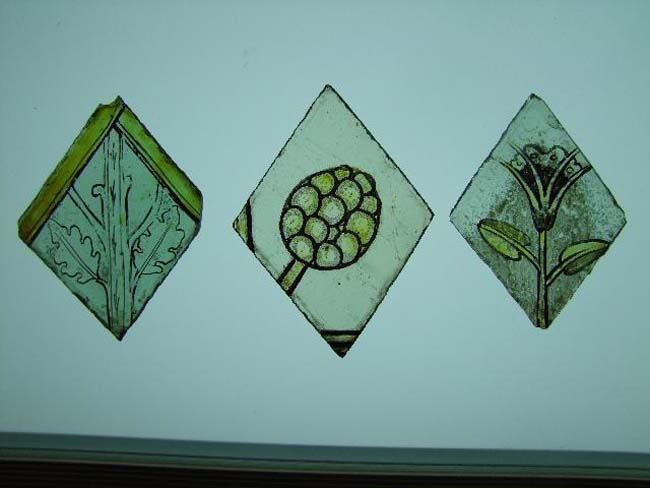
Filename: quarry1.jpg.
Download image
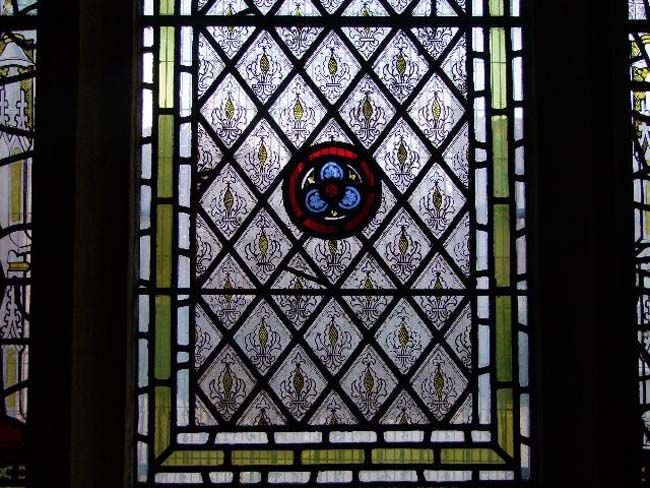

Filename: quarry2.jpg.
Download image
|
QUARRY A small pane of glass, usually diamond-shaped (from French carré, square). Imitation quarries are glass panels that have lead lines painted on them to simulate the appearance of quarries. | |
|
|
RECTANGLE A unipartite panel of rectangular shape. Such a panel is sometimes described as a ROUNDEL. | |
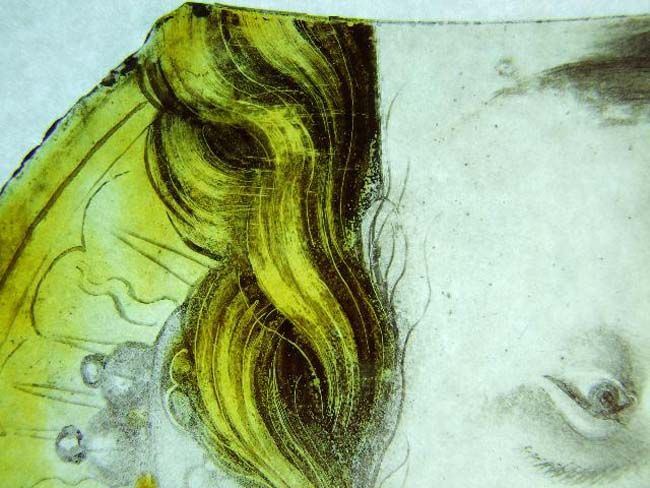

Filename: relieving.jpg.
Download image
|
RELIEVING The removal of paint from the surface of the glass prior to firing, to allow light to come through; see also NEEDLEWORK and STICKWORK. | |
|
|
REVERSED Set inside out. | |

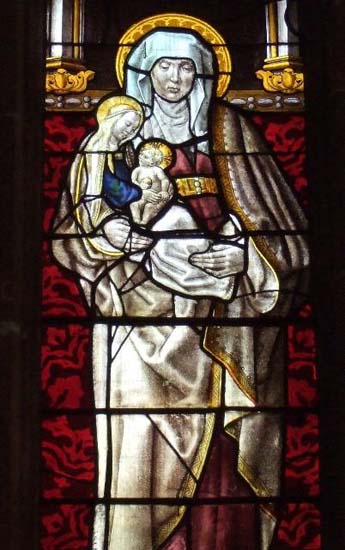
Filename: rinceau.jpg.
Download image
|
RINCEAU A foliage design usually used as a background. | |

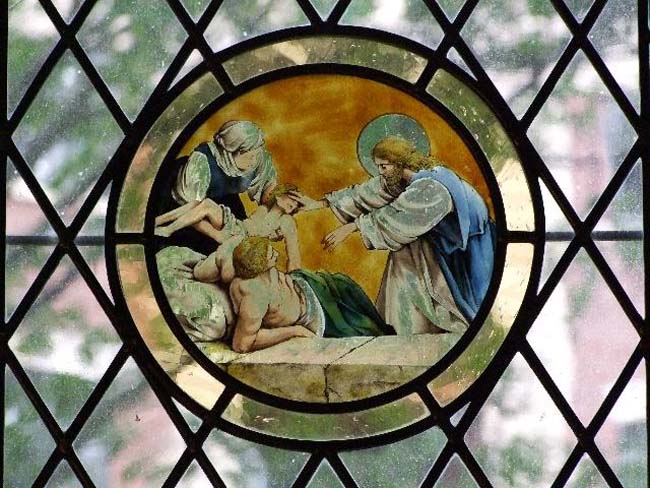
Filename: roundel.jpg.
Download image
|
ROUNDEL Unipartite panel, generally round, bearing a self-contained design. | |
|
|
RUBY Red glass, normally made by FLASHING red glass onto a base glass. | |
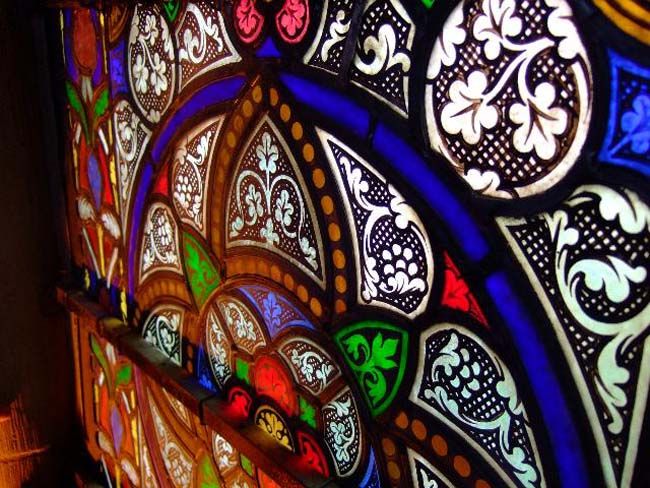

Filename: saddlebar.jpg.
Download image
|
SADDLE-BAR or TIE-BAR A bar fixed across the opening of a window, set on the inside or outside, to which panels may be attached by lead ties. Saddle-bars were used either alone or in conjunction with STANCHIONS. | |
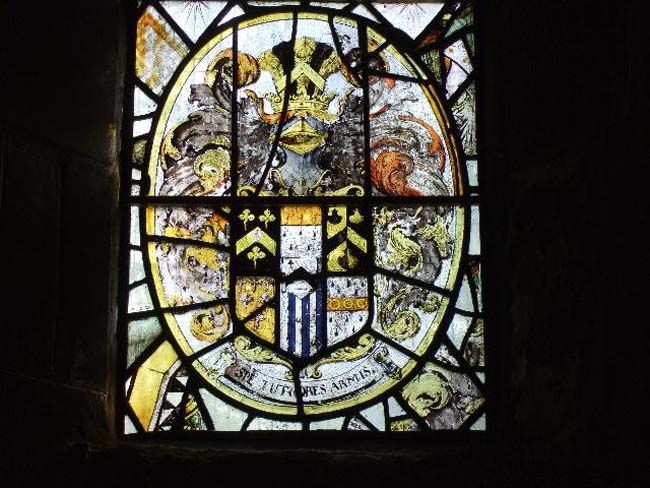

Filename: sanguine.jpg.
Download image
|
SANGUINE An iron-based glass paint that turns pink to red-brown on firing. | |
|
|
SCRATCH OUT See NEEDLEWORK. | |
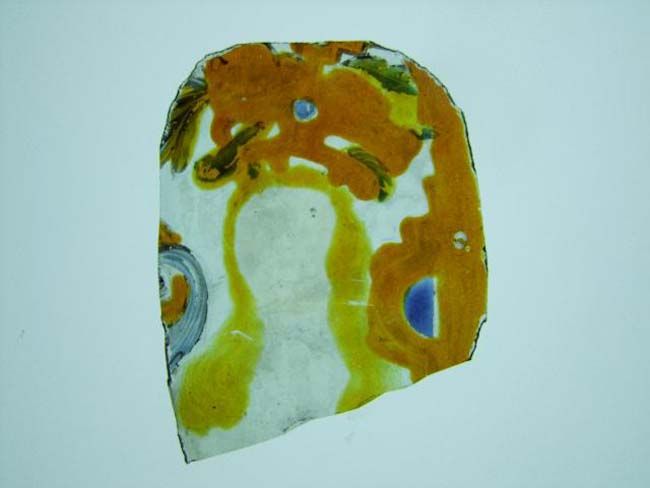

Filename: silverstain.jpg.
Download image
|
SILVER STAIN or YELLOW STAIN A stain produced by applying a silver-compound solution to the surface of the glass. When fired, the stain turns yellow, which can range in hue from pale lemon to orange. It is nearly always found on the exterior face of the glass. | |

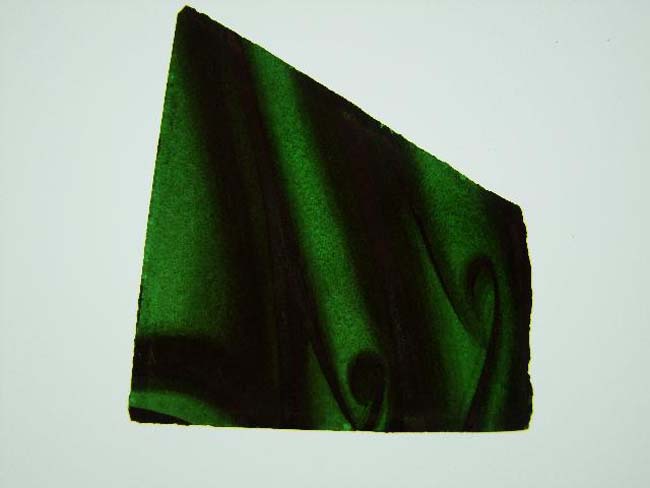
Filename: smearshading.jpg.
Download image
|
SMEAR SHADING An application of thin paint on the glass. | |
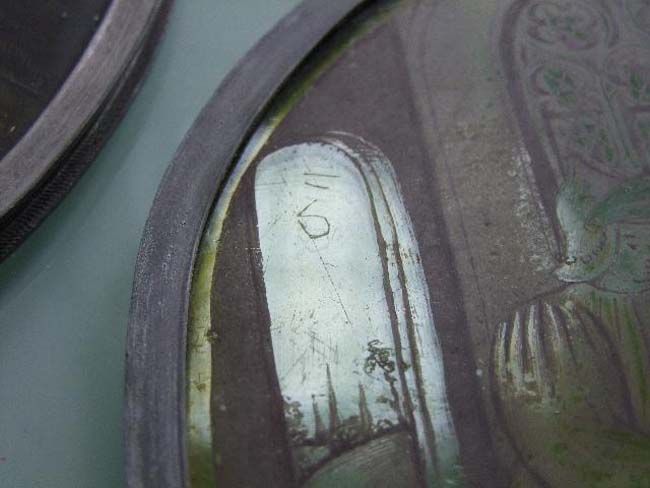

Filename: sortingmark.jpg.
Download image
|
SORTING MARK A small mark, relieved out of a wash, or painted or scratched onto the glass, used by the glazier to sort the pieces of fired glass after removal from the kiln. | |
|
|
STAINED GLASS The term commonly but misleadingly used to denote a medium that comprises pieces of glass painted with glass paint and set within lead cames in a mosaic technique. Colour was inherent in the pieces of glass for most of the middle ages. Glass paint was in shades of brown or black, and SILVER STAIN was developed and used extensively for glass painting from the early fourteenth century. Sanguine and a range of enamel colours that could be painted onto the glass were developed in the late fifteenth and sixteenth centuries. | |
|
|
STANCHION A vertical support-bar set on the inside or outside (or both) of panels, in order to support them. A stanchion is used in conjunction with SADDLE-BARS, which sometimes have eyes through which a stanchion can pass. They were not always required. | |
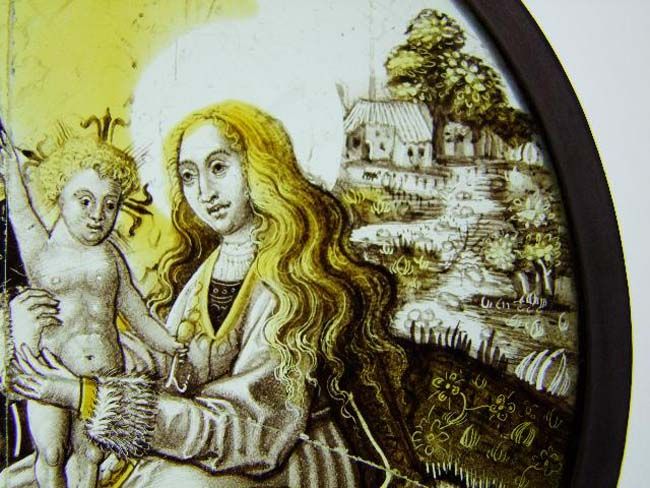

Filename: stickwork.jpg.
Download image
|
STICKWORK Relieving done with the end of a brush or blunt instrument, picking out. | |
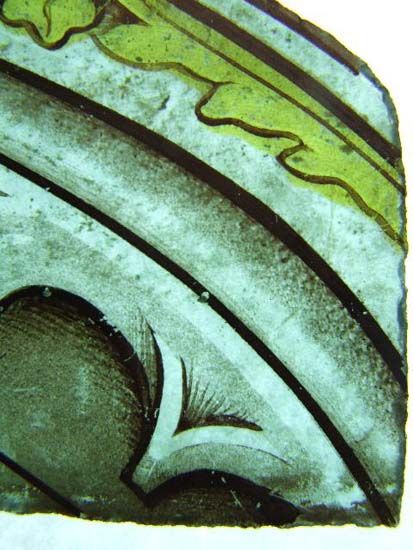

Filename: stippling1.jpg.
Download image
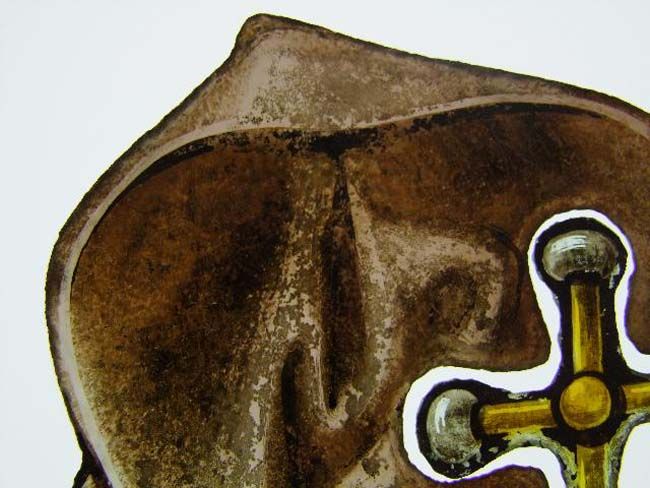

Filename: stippling2.jpg.
Download image
|
STIPPLING or STIPPLE-SHADING A method of shading by dabbing paint. | |
|
|
T-BAR A horizontal bar set between panels that transfers the weight of the panels to the frame enclosing them. The panels are sometimes held in place by lugs (wedges), in which case the bars are known as lug-bars. | |
|
|
TIE-BAR See SADDLE-BAR. | |
|
|
TRACE-LINE A line of paint produced as part of the drawing of the design on the glass. | |
|
|
VIDIMUS (Latin ‘we have seen’) a term used to denote the approved design for a window prior to the cartoon used by the glass painter. | |
|
|
YELLOW STAIN See SILVER STAIN. | |




